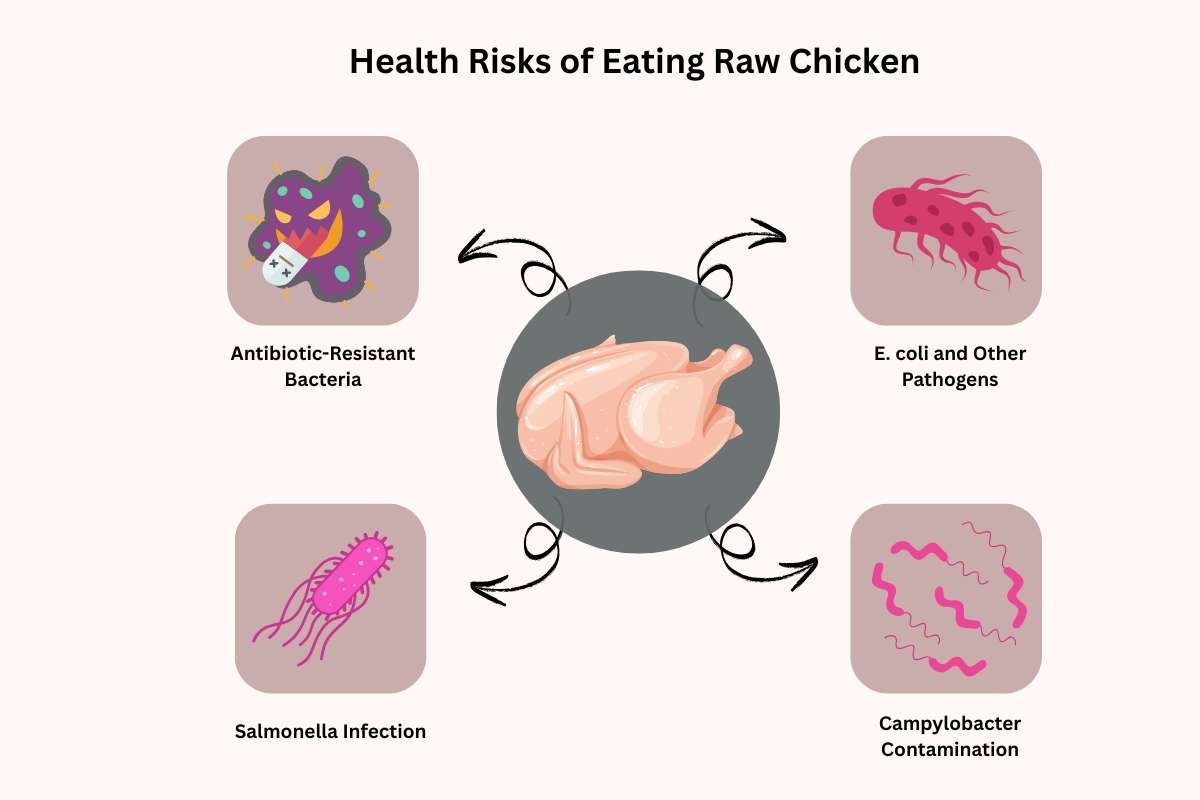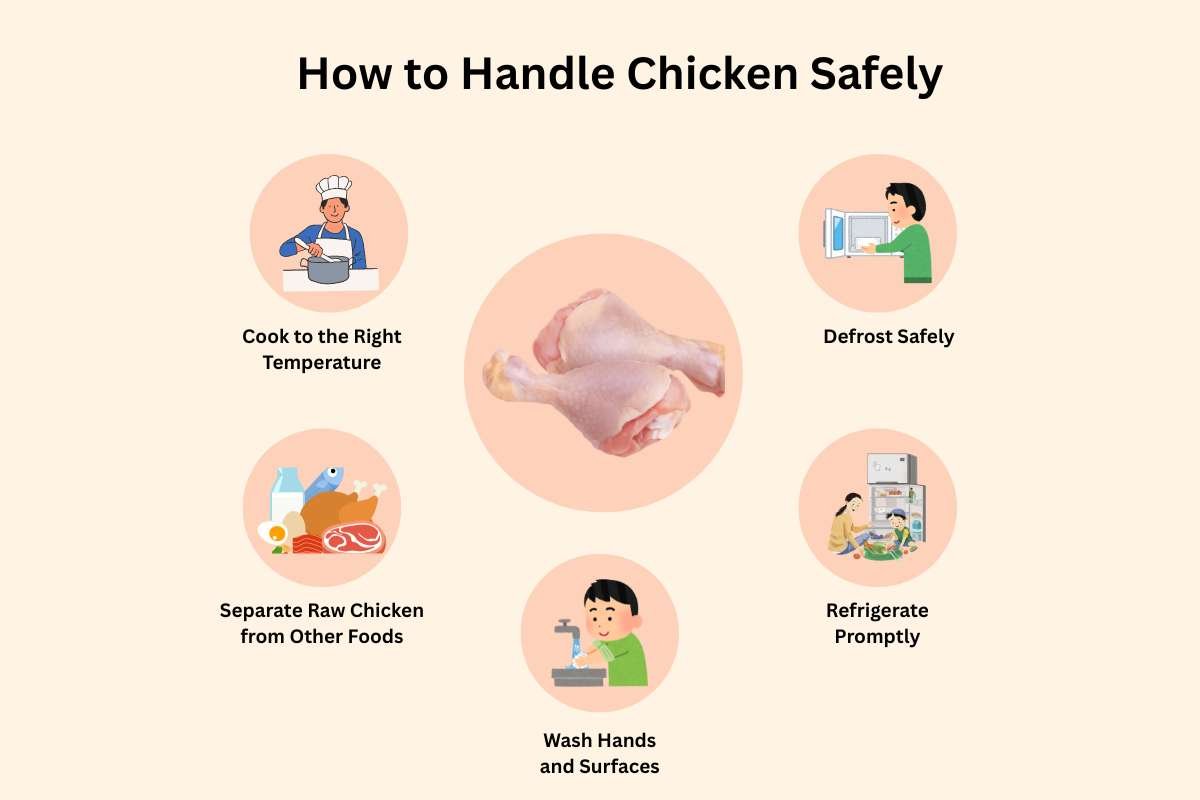The Shocking Truth Behind Eating Raw Chicken: Is It Ever Safe?
The Shocking Truth Behind Eating Raw Chicken: Is It Ever Safe?
Blog Article
The Shocking Truth Behind Eating Raw Chicken: Is It Ever Safe?

- Source: Image by Изображения пользователя Vladimir Mironov
You’ve likely heard of sushi lovers indulging in raw fish or foodies raving about steak tartare, but what happens when the raw food trend crosses into more dangerous territory?
Some culinary risks play with adventure; others, with disaster. And there’s one choice that crosses a very thin, risky line, often without warning.
That brings us to the highly controversial, often Googled curiosity: eating raw chicken. Unlike other raw delicacies, this isn’t just edgy; it can be downright dangerous. So why do some still try it, and what exactly happens when they do? Let’s reveal the risks, realities, and myths behind this viral food dare.
Is It Safe to Eat Raw Chicken?

Some cultures may serve dishes with lightly cooked or raw poultry, such as Japan’s torisashi, but these are made under extremely controlled, hygienic conditions that are not replicable in most home kitchens or even many restaurants.
Unless you are in a highly regulated environment where the chicken is certified as “sashimi-grade,” which is extremely rare, you should never attempt to eat raw chicken.
Health Risks of Eating Raw Chicken

1. Salmonella Infection
Salmonella is one of the most common and dangerous bacteria found in raw chicken. It can cause symptoms ranging from gastrointestinal discomfort to severe dehydration and, in rare cases, death, especially in young children, the elderly, or immunocompromised individuals.
2. Campylobacter Contamination
Another major culprit, Campylobacter, can cause diarrhea, fever, nausea, and cramps. It’s also linked to Guillain-Barré syndrome, a rare disorder where the body’s immune system attacks the nerves, potentially leading to paralysis.
3. E. coli and Other Pathogens
Though less common than Salmonella or Campylobacter, raw chicken can also harbor E. coli, Clostridium perfringens, and Listeria, all of which can wreak havoc on your digestive system and overall health.
4. Antibiotic-Resistant Bacteria
In some cases, poultry may carry drug-resistant bacteria, making treatment more difficult if you fall ill. This is a growing concern globally due to the overuse of antibiotics in livestock.
Symptoms of Eating Raw Chicken
Let’s say you accidentally eat raw or undercooked chicken. What should you look out for?
Here are common symptoms that may appear within 6 to 72 hours of consumption:
- Nausea and vomiting
- Diarrhea (often watery or bloody)
- Stomach cramps
- Fever
- Headache
- Body aches
- Fatigue
- Chills
These symptoms can last anywhere from a few hours to over a week. In more severe cases, people may require hospitalization for dehydration or complications like reactive arthritis or bloodstream infections.
If you’ve eaten raw chicken and start to feel any of these symptoms, seek medical help immediately. Early mediation can prevent more serious outcomes.
How to Handle Chicken Safely:
Avoiding raw chicken risks begins with safe handling practices in the kitchen. Whether you’re prepping lunch or grilling for a party, follow these guidelines:

1. Cook to the Right Temperature
Always cook chicken to an internal temperature of 165°F (74 °C). Use a meat thermometer to ensure accuracy. Don’t just rely on visual signals, such as color or texture.
2. Separate Raw Chicken from Other Foods
Keep raw chicken and its juices away from fruits, vegetables, or ready-to-eat items to prevent cross-contamination. Use separate cutting boards and utensils whenever possible.
3. Wash Hands and Surfaces
After handling raw chicken, wash your hands with soap and water for at least 20 seconds. Clean countertops, knives, and cutting boards thoroughly with hot, soapy water.
4. Refrigerate Promptly
Store raw chicken in the refrigerator at 40°F (4°C) or below, and use it within 1–2 days. Freeze it if you’re not planning to cook it immediately.
5. Defrost Safely
Melt frozen chicken in the refrigerator, not on the counter. Leaving chicken out at room temperature invites bacterial growth.
Conclusion
Eating raw chicken is never safe, no matter how adventurous your taste is. From salmonella to antibiotic-resistant bacteria, the health risks can be greater than any potential cooking thrill.
Symptoms of raw chicken consumption can be both miserable and medically serious, ranging from stomach upset to hospitalization. That’s why knowing how to handle and cook chicken safely is essential.
So the next time you’re cooking up a chicken dish, take those few extra minutes to make sure it’s fully cooked and properly handled. Your body will thank you, and so will everyone at the dinner table.
FAQ:
1. What should I do if I ate raw chicken?
If you have eaten raw chicken, you should primarily focus on staying hydrated and monitoring for symptoms. If you start experiencing symptoms like nausea, vomiting, or diarrhea, focus on replacing lost fluids. Over-the-counter medications like Imodium or Pepto-Bismol can help manage symptoms. If symptoms are severe, persist, or worsen, seek medical attention.
2. What are the chances of getting sick from raw chicken?
Eating chicken raw carries a significant risk of getting sick due to potential bacterial contamination, primarily Campylobacter and Salmonella. While not every bite will lead to illness, the presence of these bacteria in raw chicken necessitates thorough cooking.
3. How long after eating raw chicken does it affect you?
Illness often starts in 1 to 3 days, but symptoms can start any time from 30 minutes to 3 weeks after eating contaminated food. The refrigerated food may also be contaminated by spoilage bacteria if not covered with a lid or stored for a long time.